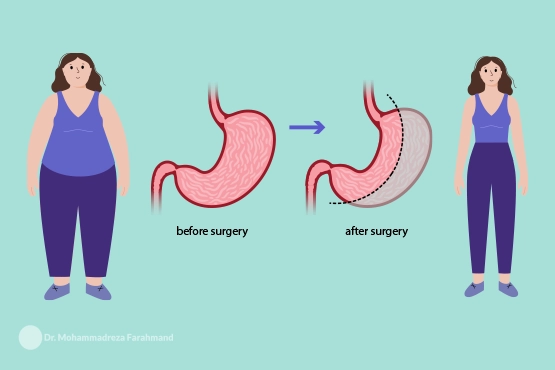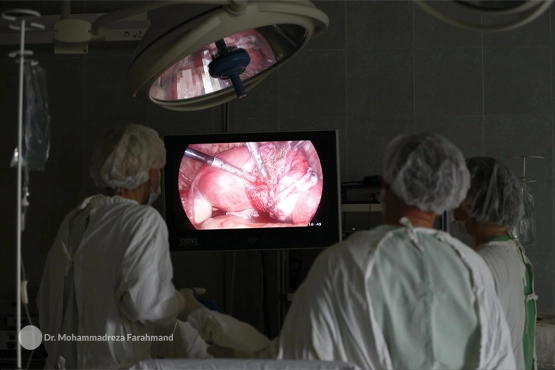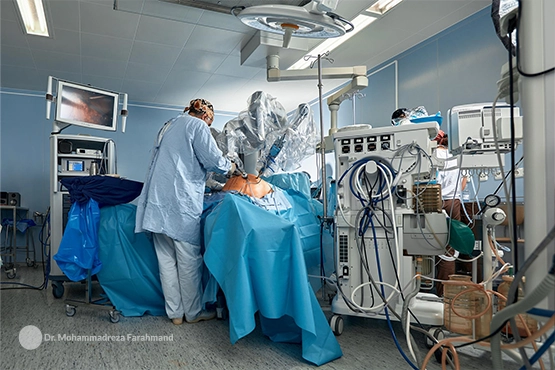Sleeve Gastrectomy
The sleeve gastrectomy or gastric sleeve surgery, a bariatric surgery, is a way for weight loss which includes removing a great portion of the stomach (approximately 80%) leaving just a tubular sleeve behind. The narrow sleeve is shaped like a banana and is almost of the same size. Immediately after the surgery the person begins to lose weight since it reduces the size of the patient’s stomach and therefore lowers his food and calorie intake. Moreover, the surgery induces hormonal changes that help lose weight—moderating hunger hormones. One would lose about 60 percent of their excess weight through VSG. In this article, we aim to observe the sleeve gastrectomy surgery’s procedure, so if you plan to have this laparoscopic surgery, read the articled to the end as it gives advertent information on the subject.
Sleeve Gastrectomy
Sleeve gastrectomy or vertical sleeve gastrectomy (VSG) is the most common weight loss surgery worldwide and is considered as a minimally invasive surgery, thus, it has very few side effects and is known to be an effectual operation. It also helps relieve obesity-related conditions, such as heart disease, cancer, and diabetes. VSG is usually taken under consideration after weight loss through a better diet and workout routine fails, for it lowers the appetite and impulses that typically lead to regaining the weight a person has lost in other methods. However, it is not advised for people who cannot change their diet and exercise habits for the rest of their lives, or for those who are alcoholic. Furthermore, smokers will have to stop smoking several months before their operation.
The Process of Sleeve Gastrectomy
Sleeve gastrectomy is a laparoscopic surgery which means that as small narrow tube is inserted into the stomach through several small incisions in the upper abdomen. The tube has a tiny lamp and camera in addition to other accessory tools. The patient usually goes under anesthesia, thus, before the surgery, all the related tests and their results must be shared with the doctor. Of course, anesthetics do not have as many side effects as they used to; they simply put you into a very deep sleep. This procedure needs a ventilator so that the patient breathes in the anesthetic gas.
VSG divides the stomach into two unequal parts. About the 80 percent of the great curvature is removed and taken out of the abdomen through an incision and the rest of the stomach is stapled together. This turns the remaining 20-25 percent of the stomach into a narrow sleeve. The operation lasts 30-60 minutes and afterward the patient is moved to recovery room for postoperative care. He or she is kept in the recovery room for 1-2 hours. The small incisions in the abdomen usually heal rather quickly. The minimal invasiveness oof the sleeve gastrectomy helps the patient to recover fast and go back to his routine life.

Effectivity of Sleeve Gastrectomy
Gastric sleeve surgery only leads to permanent weight loss if it is accompanied with a healthy diet and exercise habits. But overall, it helps lose weight in two ways:
- When the individual’s stomach becomes smaller, he gets hungry later than he used to. Further, he feels full after eating only a small amount of food, as a result by receiving less calorie than before he maintains a healthier weight.
- During the gastrectomy surgery the part of the stomach that produces the hunger hormone, ghrelin, is removed, hence, the person feels hungry less than before.
According to the American Society for Metabolic and Bariatric Surgery (ASMBS), those who go under VSG lose at least 50 percent of their excess weight 18-24v months after the surgery. These numbers, of course, differ in different people and some would lose more than 60-70 percent of their excess weight.

Benefits of Losing Weight by Sleeve Gastrectomy
It is no secret that losing a considerable portion of the excess weight can improve life quality and facilitate doing many of daily activities. Moreover, gastric sleeve surgery has the advantage of lowering the risk of weight-related diseases and problems, some of which are:
- Type 2 diabetes
- cancer
- High cholesterol (hyperlipidemia)
- High blood pressure
- Infertility
- Obstructive sleep apnea (OSA)
- Heart disease
- Stroke

Who Can Have Sleeve Gastrectomy?
Any sort of bariatric surgery is considered an ideal option when there is no need to go on a restricted diet, change exercising habits, or take weight loss medication. Even so, adhering to some lifestyle factors such as a healthy diet is necessary for reaching the best results.
To be eligible for the surgery, which is usually done on obese people at risk, the person must have some conditions; however, still, only 1% of people who could benefit and would qualify for the surgery would get it. Some of these conditions include the following:
- Severe obesity (BMI score of 40 or higher)
- BMI (body mass index) score of 35-39.9, and a serious weight-related disease like hypertension, type 2 diabetes, and severe sleep apnea
- Sometimes, only when a person’s health is concomitant to weight loss or they suffer from a serious weight-related condition, the doctor gives permission for gastrectomy for people with a BMI score of 30-34.
Risks of Sleeve Gastrectomy
VSG is considered as a rather safe option, yet, like any other surgery, it comes with some risks and complications. Some of these risks and complications include the following:
- Hemorrhage: If the patient bleeds intensely, after the operation he or she will go into nervous shock.
- Deep vein thrombosis (DVT): The surgery and the healing process can increase the risk of thrombus (blood clot) formation in the veins, which often appear in leg veins.
- Pulmonary embolism: Pulmonary embolism happens when a part of the blood clot gets torn and moves toward the patient’s lungs.
- Heart arrythmia: Gastric sleeve surgery can increase the risk of heart arrythmia (irregular heartbeat), especially atrial fibrillation (AFib).
- Pneumonia: The pain which is caused by the surgery can increase the possibility of the patient suffering lung infections such as pneumonia.
- Gastric leakage: There is the possibility of fluids leaking through the sutures in the stomach.
- Stenosis: Part of the stomach sleeve may get blocked in which case the possibility of a blockage forming in the stomach increases.
- Vitamin deficiency: Considering that a large part of the stomach is removed during the surgery, vitamin absorption will become difficult and problematic. Of course, the doctor, being aware of this condition, will prescribe nutritional supplements and multi vitamins.
- Gastroesophageal reflux disease (GERD): The change in the stomach’s shape could cause acid reflux or also known as heartburn. If you the patient already suffers from acid reflux, VSG could make it worse and gastric bypass surgery is recommended instead. Of course, GERD is usually treatable using non-prescription medication.
- Breathing problems caused by general anesthesia

Sleeve gastrectomy is a safe and modern option among bariatric surgeries. VSG makes the patient’s stomach smaller which leads to his or here losing weight; it also causes them to feel hungry less than they did before and less frequently as well.
Of course, one must have certain conditions so that he can be a candidate for gastric sleeve surgery. First, the patient must prove that no other way has been effective for losing weight—dieting, working out, taking weight loss medication, for instance. Furthermore, they must have a BMI score of 40 or higher. If their BMI is lower than 40, if they suffer other serious weight-related conditions, the patient may be eligible to have the surgery.
If one follows a healthy diet after VSG, they could lose around 60 percent of their excess weight. However, it must be noted that VSG is not free of risks and complications, even though they are rare. Consult a doctor to make sure going under the gastric sleeve surgery is safe for you if you are qualified to have it.
